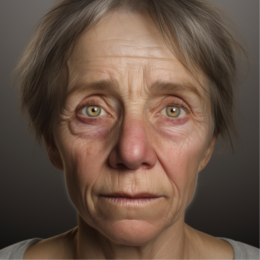Understanding the Complex Roots of Alcohol Addiction

Every day, countless individuals face the challenges associated with alcohol use disorder. Alcohol, while enjoyed by many as a social or relaxation tool, becomes a destructive force in the lives of others. What factors dictate who will fall prey to alcohol? Let’s dive deeper into the intricacies of what causes alcohol addiction and what is an alcohol addiction.
Alcoholism Brief Overview
Alcoholism, or alcohol use disorder, encompasses a spectrum where the individual excessively consumes alcohol despite the negative consequences on their health, personal life, and occupational responsibilities. This addiction presents through a compelling urge to drink, a lack of control over alcohol intake, painful withdrawal symptoms, and an escalating need to drink more to achieve the same effect.
The root causes of alcohol addiction are complex, weaving together genetic, psychological, and environmental threads.
Internal Factors
Internal factors deal with personal attributes and choices that can predispose or protect an individual from developing alcohol addiction.
Facts and Statistics:
Research has shown that the brain’s prefrontal cortex, which controls impulse and decision-making, isn’t fully developed until age 25. This might explain why younger individuals are more prone to impulsive decisions regarding alcohol.
Personality Factors
Every individual has a unique personality, which can heavily influence their relationship with alcohol. Those with high levels of impulsivity or sensation-seeking tendencies might be drawn to the immediate effects of alcohol. Moreover, individuals with anxiety or depressive disorders may self-medicate with alcohol, mistaking its initial calming effects as therapeutic, only to exacerbate their conditions in the long run.
Facts and Statistics:
Studies have found a correlation between certain personality types, as categorized by the Myers-Briggs Type Indicator (MBTI), and predispositions to substance abuse.
Personal Choice Factors
An individual’s decisions can set the stage for their relationship with alcohol. This includes the frequency and quantity of their consumption. The decision to drink excessively at parties or to cope with stressful events can establish a pattern leading to dependence.
Facts and Statistics:
In a survey, many young adults reported that their first experience with alcohol was due to curiosity rather than peer pressure.
Drinking History Factors
Early and frequent exposure to alcohol can influence the brain’s reward pathways. Consistent binge drinking during teenage years or young adulthood can desensitize these pathways, requiring more alcohol to achieve the same pleasurable effects, thereby setting the foundation for dependency.
Facts and Statistics:
Patterns of binge drinking during college years can predict patterns of consumption in the subsequent decade, irrespective of responsibilities and life changes.
Genetic Factors
Genetics plays a pivotal role when discussing alcohol addiction. Some people metabolize alcohol differently due to their genetic makeup, affecting their tolerance and dependence. Moreover, when questioning what is the link between heredity and alcohol addiction, some studies indicate that individuals with a family history of alcoholism may have an inherent vulnerability to developing the disorder.
Facts and Statistics:
Some genetic markers, like the ALDH2 gene commonly found in East Asians, can cause adverse reactions to alcohol, decreasing the likelihood of excessive consumption.
Age Factors
Initiating alcohol consumption at a young age can increase vulnerability. The adolescent brain is still developing, especially in judgment, decision-making, and impulse control areas. Early exposure can potentially disrupt this development, increasing the risk of dependency.
Facts and Statistics:
Research shows that individuals who start drinking before the age of 15 are four times more likely to develop alcohol dependence later in life than those who start drinking at 21.

External Factors
External factors concern influences from the individual’s environment, social circles, and broader cultural norms that can either mitigate or elevate the risk of alcoholism.
Facts and Statistics:
Societies and communities that underwent rapid urbanization or industrialization have seen notable shifts in alcohol consumption patterns.
Familial Factors
Families play a pivotal role in shaping an individual’s perception of alcohol. Growing up in a household where alcohol misuse is rampant, without adequate education about its repercussions, can create a skewed understanding, increasing susceptibility.
Facts and Statistics:
In families with a history of alcoholism, even those members who don’t consume alcohol tend to exhibit similar brainwave patterns as alcoholics, suggesting a genetic component to the disorder.
Environmental Factors
Community norms, availability of alcohol, and exposure to alcohol advertising can sway an individual’s drinking habits. If you’re in an environment where heavy drinking is normalized or encouraged, it becomes challenging to recognize the early signs of addiction.
Facts and Statistics:
Places with more bars and liquor stores per capita often see higher rates of alcohol-related problems, indicating the environment’s strong influence on behavior.
Religious Factors
Religious beliefs and teachings hold considerable sway over many individuals’ lifestyles. Some religions prohibit alcohol, while others might allow moderate consumption. An individual deeply rooted in a faith that restricts alcohol might be less likely to consume, while someone in a more permissive religious environment might not have such constraints.
Facts and Statistics:
Some studies have found that while certain religious groups consume less alcohol overall, they may have higher rates of binge drinking when they do consume.
Social And Cultural Factors
Peer pressure and societal expectations can be significant influencers. In cultures where drinking is a rite of passage or an integral part of celebrations, individuals might be more inclined to indulge. Moreover, societies that stigmatize addiction can discourage those suffering from seeking help.
Facts and Statistics:
In certain cultures, alcohol is predominantly consumed during rituals and ceremonies, but regular drinking might be frowned upon outside of these events.
Educational Factors
While higher education levels have been associated with increased alcohol consumption, the reasons are multifaceted. University culture, academic pressures, and networking events where alcohol is prevalent can contribute to increased consumption among the educated populace.
Facts and Statistics:
The “Freshman 15,” a term often used to describe weight gain during the first year of college, sometimes includes alcohol consumption as a significant contributor.
Career Factors
Certain professions come with inherent stresses or social obligations that include drinking. Corporate networking events, client dinners, or simply the high-pressure environment of some careers might lead to increased alcohol consumption as a coping or bonding mechanism.
Facts and Statistics:
Some professions, like bartending or sales, have been observed to have higher rates of alcoholism, potentially due to their regular interaction with or proximity to alcohol.
How Risk Factors Affect Treatment
Recognizing the diverse array of risk factors is crucial in treatment. Someone driven to drink due to job stress might need stress management tools, whereas someone with a genetic predisposition might require a more biologically focused intervention. The spectrum of treatments is vast, and personalizing these based on the underlying risk factors can significantly enhance their effectiveness.
Conclusion
The journey to understanding what is alcohol addiction is paved with many internal and external influences. By recognizing and examining these factors, society can better assist those at risk, offering tailored preventive measures and therapies. It’s crucial to remember that seeking professional help early can make the journey to recovery smoother and more achievable.
References
- National Institute on Alcohol Abuse and Alcoholism (NIAAA). (n.d.). Alcohol Facts and Statistics. https://www.niaaa.nih.gov/publications/brochures-and-fact-sheets/alcohol-facts-and-statistics
- Kuntsche, E., Knibbe, R., Gmel, G., & Engels, R. (2006). Who drinks and why? A review of socio-demographic, personality, and contextual issues behind the drinking motives in young people. Addictive behaviors, 31(10), 1844-1857.
- Edenberg, H.J. (2007). The Genetics of Alcohol Metabolism: Role of Alcohol Dehydrogenase and Aldehyde Dehydrogenase Variants. Alcohol Research & Health, 30(1), 5–13.
- Dawson, D.A., Goldstein, R.B., Chou, S.P., Ruan, W.J., & Grant, B.F. (2008). Age at First Drink and the First Incidence of Adult-Onset DSM-IV Alcohol Use Disorders. Alcoholism: Clinical and Experimental Research, 32(12), 2149–2160.
- Theall, K.P., Scribner, R., Cohen, D., Bluthenthal, R.N., Schonlau, M., & Lynch, S. (2009). The Neighborhood Alcohol Environment and Alcohol-Related Morbidity. Alcohol and Alcoholism, 44(5), 491–499.
- Michalak, L., Trocki, K., & Bond, J. (2007). Religion and Alcohol in the U.S. National Alcohol Survey: How Important Is Religion for Abstention and Drinking? Drug and Alcohol Dependence, 87(2-3), 268–280.
- Room, R. (2001). Intoxication and bad behavior: understanding cultural differences in the link. Social Science & Medicine, 53(2), 189-198.
- Weitzman, E.R., & Nelson, T.F. (2004). College Student Binge Drinking and the “Prevention Paradox”: Implications for Prevention and Harm Reduction. Journal of Drug Education, 34(3), 247–265.
- Frone, M.R. (2006). Prevalence and Distribution of Alcohol Use and Impairment in the Workplace: A U.S. National Survey. Journal of Studies on Alcohol, 67(1), 147-156.





